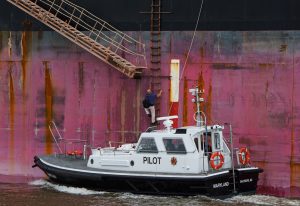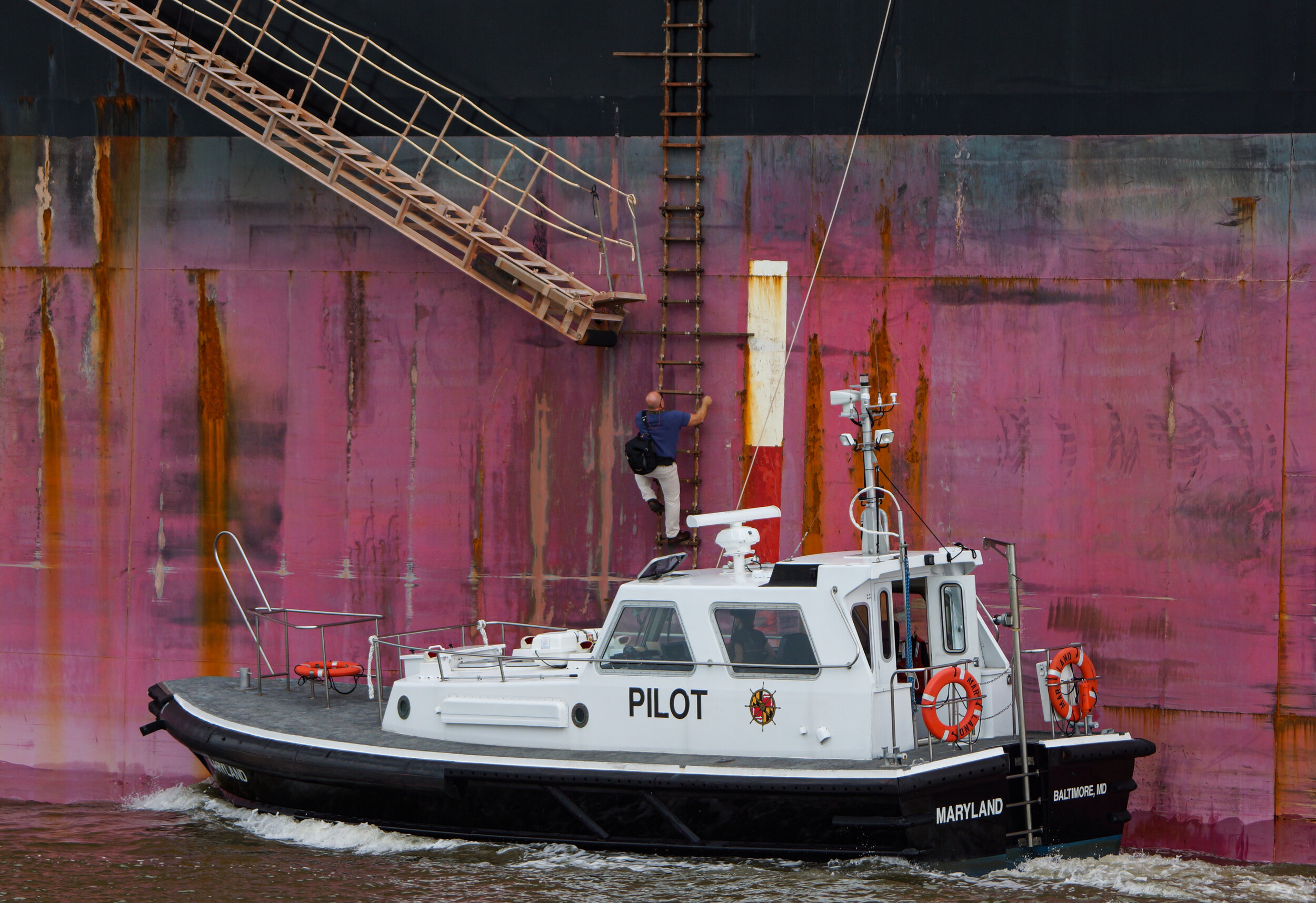Marine pilotage is a vital aspect of maritime navigation, ensuring the safe and efficient passage of vessels through challenging or congested waters, such as ports, harbors, and narrow channels. Marine pilots, also known simply as pilots, are highly trained professionals with expert knowledge of specific local waters. Their primary role is to board incoming and outgoing ships and guide them safely through difficult and potentially hazardous areas.
In this comprehensive guide, we’ll explore the role of marine pilots, the pilotage process, the importance of pilotage in maritime operations, and the skills and qualifications required to become a marine pilot.

What is Marine Pilotage?
Marine pilotage refers to the act of guiding and navigating a ship through restricted, congested, or high-risk waters, typically near ports, rivers, harbors, or coastal areas. Marine pilots, who are experts in local waterways, are required to board vessels and assist the ship’s master (captain) by offering specialized navigational guidance. This service is particularly crucial in areas where there are high risks of accidents, such as in heavily trafficked harbors or when navigating through narrow or shallow channels.
While the ship’s captain retains overall responsibility for the vessel, the marine pilot assumes temporary command of the ship’s navigation and provides essential advice based on local knowledge of tides, currents, shoals, and other navigational hazards.
Why is Marine Pilotage Important?
Marine pilotage plays a crucial role in maintaining safety and efficiency in maritime operations. Here’s why marine pilotage is so important:
- Safety: Marine pilots help prevent accidents, groundings, and collisions by ensuring that vessels navigate safely through areas with limited space, unpredictable currents, and potential hazards. They are trained to handle large ships in restricted waters where even small errors can result in significant damage.
- Local Expertise: Marine pilots possess intimate knowledge of the local waterway’s geography, including its depths, currents, tide schedules, landmarks, and any underwater obstacles. This knowledge is essential for navigating vessels through unfamiliar waters, especially for international vessels that may lack familiarity with local conditions.
- Regulatory Compliance: In many ports and harbors around the world, marine pilotage is legally required for certain types of vessels, particularly larger ones, to ensure compliance with local navigation regulations. Pilots help enforce these regulations and ensure that ships adhere to the necessary navigational rules and safety protocols.
- Environmental Protection: By guiding vessels through sensitive environmental areas, such as coastal ecosystems, marine pilots reduce the risk of accidental spills, groundings, and other incidents that could harm the environment. Pilots also help mitigate the effects of high-traffic areas on marine wildlife and coastal habitats.
- Efficient Operations: With their expert understanding of port operations and traffic management, marine pilots help ensure that vessels enter and leave ports as efficiently as possible. This efficiency reduces delays, improves the scheduling of vessel traffic, and enhances overall port productivity.
The Role and Responsibilities of a Marine Pilot
Marine pilots perform a range of tasks that involve both technical expertise and practical knowledge. Here are the primary responsibilities of a marine pilot:
1. Boarding the Ship:Marine pilots typically board vessels at a designated pilot boarding area, which is located some distance from the port or harbor. Pilots board ships via a pilot boat, which brings them alongside the moving vessel. Using a pilot ladder, the marine pilot climbs aboard, where they meet with the ship’s captain and officers to discuss the ship’s condition and upcoming navigation route.
2. Navigational Assistance:Once on board, the marine pilot assumes responsibility for navigating the ship through challenging waters. They provide precise instructions to the ship’s crew, guiding the ship safely past navigational hazards, adjusting speed, and ensuring proper course changes. Marine pilots work closely with the ship’s bridge team, including the captain and officers, to coordinate all aspects of the navigation.
3. Communicating with Port Authorities:Marine pilots are responsible for maintaining constant communication with port authorities, vessel traffic services (VTS), and other local stakeholders. They relay information about the vessel’s position, speed, and any traffic or environmental changes, ensuring that the ship follows the port’s established safety procedures and traffic management protocols.
4. Maneuvering in Tight Spaces:One of the most important tasks for marine pilots is maneuvering large ships in tight or congested areas, such as harbors, docks, or rivers. This requires precise navigation, as even a slight miscalculation can result in damage to the vessel, port infrastructure, or other ships. Pilots may also coordinate the use of tugboats, which assist with turning and docking large ships that cannot maneuver effectively on their own.
5. Handling Adverse Weather Conditions:Marine pilots are trained to navigate vessels in adverse weather conditions, such as heavy fog, strong winds, or rough seas. In such conditions, radar, GPS, and other navigation tools are crucial, but the pilot’s local expertise and ability to make quick decisions based on real-time conditions are indispensable.
6. Docking and Berthing:After safely guiding the ship through the harbor or channel, the marine pilot’s final task is often to assist with docking and berthing the vessel. This requires careful coordination with the ship’s crew, port authorities, and, in many cases, tugboats. The pilot ensures that the ship is safely moored at the dock and ready for cargo operations.
Types of Pilotage
Marine pilotage can be classified into different types, depending on the nature of the waterway and the specific challenges it presents. Here are some common types of pilotage:
1. Port or Harbor Pilotage
This is the most common form of pilotage, where marine pilots guide ships in and out of ports and harbors. Port pilotage involves navigating vessels through narrow entry channels, past breakwaters, and into docking areas. Harbor pilots ensure that ships avoid shallow waters and safely maneuver in busy port environments.
2. River Pilotage
In river pilotage, pilots guide vessels through rivers or estuaries that connect inland ports to the sea. River navigation is often complicated by strong currents, variable depths, and narrow passages. River pilots are experts in the unique characteristics of the river and ensure that ships avoid sandbanks, bridges, and other riverine obstacles.
3. Coastal Pilotage
Coastal pilotage occurs when ships travel along coastlines where navigation can be challenging due to rocky shores, reefs, or strong tidal currents. Pilots help guide vessels through these waters safely and ensure that they maintain the appropriate distance from the coastline to avoid hazards.
4. Canal Pilotage
In regions with major canals, such as the Panama Canal or the Suez Canal, marine pilots are required to navigate vessels through narrow canal passages. Canal pilotage requires expert knowledge of the specific waterway’s lock systems, current patterns, and traffic management.
The Training and Qualifications of a Marine Pilot
Becoming a marine pilot requires extensive training, experience, and local expertise. The pathway to becoming a licensed marine pilot typically involves the following steps:
1. Seafaring Experience: Most marine pilots start their careers as deck officers or ship captains, gaining significant experience in maritime navigation. The extensive sea-time allows prospective pilots to build the necessary skills in ship handling, navigation, and safety procedures.
2. Marine Pilot Training: After gaining sufficient experience, individuals aspiring to become marine pilots must complete a specialized pilot training program. These programs are often provided by maritime academies, pilot associations, or port authorities and focus on topics such as:
- Local navigation rules and regulations.
- Ship maneuvering and handling in restricted waters.
- The use of radar, electronic chart displays, and other navigational tools.
- Communication with vessel traffic services (VTS) and port authorities.
3. Apprenticeship and Licensing: After completing formal training, prospective marine pilots undergo a period of apprenticeship, where they work under the supervision of experienced pilots. During this period, they learn about the specific waterway they will be operating in and gain hands-on experience navigating vessels through that area. Once the apprenticeship is complete, pilots must obtain a license from the relevant maritime authority or pilot association. Licensing requirements vary by country but typically involve passing a series of exams and practical assessments to demonstrate proficiency in local navigation.
Regulations and Requirements for Pilotage
The rules governing marine pilotage vary depending on the country, port, and type of vessel. In many jurisdictions, pilotage is compulsory for certain vessels, especially large commercial ships, oil tankers, and cruise ships. The requirement for pilotage is usually based on factors such as:
- The size of the vessel (e.g., tonnage or length).
- The type of cargo (e.g., hazardous or oil cargo).
- The vessel’s familiarity with the local waters.
Compulsory pilotage ensures that vessels operating in difficult or congested waters are guided by trained professionals, reducing the risk of accidents and environmental damage.
Conclusion
Marine pilotage is an essential service that ensures the safe and efficient passage of vessels through some of the most challenging navigational areas in the world. Marine pilots, with their local expertise, technical skills, and experience, play a critical role in preventing accidents, safeguarding the environment, and optimizing port operations.
From guiding large cargo ships into busy ports to navigating vessels through treacherous river channels or canals, marine pilots are indispensable to the maritime industry. Their work not only enhances the safety of ship navigation but also helps support global trade and commerce, ensuring that goods and passengers are transported safely across the world’s seas and waterways.

